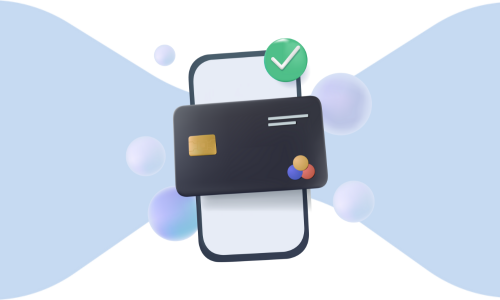Refunding TC40s Won't Solve Your Chargeback Problem

Credit card networks like Visa and Mastercard have a variety of ways to keep track of credit card fraud and protect cardholders' interests. Among these are TC40s and SAFE reports that act as fraud warnings. However, these reports are sometimes misunderstood and misused by payment managers at merchants as a tool to prevent chargebacks. In this blog, we spotlight what exactly TC40 and SAFE reports are and explain how refunding them doesn’t solve your chargeback problem in any way.
What are TC40s, SAFE, NOF and EFW reports in the world of chargebacks?
TC40 and SAFE reports include data generated by credit card issuers when a cardholder claims that they did not authorize the charges debited to their card. These reports are sent through the credit card network to a merchant’s acquirer, from there to the relevant payment service provider (PSP) and ultimately the merchant, if the PSP provides this data. While TC40 is the name of the report sent to Visa, System to Avoid Fraud Effectively or SAFE is the name of the report sent to MasterCard. These reports are sometimes given more generic names by payment service providers, which leads to confusions on the part of merchants. For example, TC40s and SAFEs are known as Notifications of Fraud or NOF to merchants who use Adyen, and merchants who use Stripe will be familiar with Early Fraud Warnings or EFW.
These reports include data on the merchant involved with the alleged fraud, such as their banking information, transaction information, and details on the cardholder claiming fraud. They’re quite large files, so acquirers don’t always automatically share this information with merchants. It depends on the acquirer. Requesting and tracking this data is a good way for merchants trying to improve their fraud prevention measures (to learn more about how to fight a fraud reason code chargeback, go here). However, in the context of protection from chargebacks, they’re often misunderstood.
What’s the linkage between TC40 and chargebacks?
Whenever a cardholder claims that it wasn’t them using their card, the issuer posts a chargeback and shares a TC40 or SAFE with the merchant. However, it’s important to note that merchants can receive TC40 or SAFE reports even without the incidence of any fraud chargebacks.
For instance, this is possible in scenarios such as when the transaction is protected under 3DSecure. In that case, the merchant is not liable for the fraud chargeback as the liability rests with the issuer. However, the TC40 or SAFE report still comes through because fraud was committed involving the merchant. To learn more, read the blog linked here.
Many merchants often get confused when they receive the TC40s or their equivalents. A common misconception is that refunding the TC40 prevents them from getting a chargeback and its negative impact on their ratios. However, this is incorrect and often ends up becoming a costly mistake.
Why does refunding a TC40 or SAFE not resolve a chargeback?
When the issuer posts a TC40 or SAFE, they usually post a chargeback. However, these often come with a lag. That’s because different teams are typically involved with handling these manual processes. Usually, the TC40 precedes the chargeback.
Because they have not yet received the chargeback, merchants sometimes refund the transaction mentioned in the TC40 or SAFE, even though the chargeback is on its way. They do this under the mistaken belief that refunding the fraudulent transaction before they physically receive the chargeback will keep their chargeback ratio low and prevent them from entering the credit card schemes’ costly chargeback monitoring programs.
However, this puts merchants in the position of double dipping on themselves without any positive impact on their fraud and chargeback ratios. This mistaken tactic is often implemented by merchants suffering from a high volume of chargebacks who have a tendency to contest only those chargebacks that are above a certain dollar amount threshold. They tend to refund everything below that for simplicity. However, this isn’t advisable either and can lead to avoidable charges.
Let’s understand the reasons for these claims better with an example.
Suppose there is a $100 transaction that a cardholder claims he or she hasn’t made. It gets flagged by the issuer with a TC40 or SAFE report. Upon receiving the EFW data from Stripe, the merchant or the payment manager chooses to refund it immediately. Their idea is to avoid chargeback and reduce the chances of getting into the card network’s high-risk program. In this case, they immediately lose $100 upon refunding.
As previously mentioned, chargebacks can come with a lag due to operational reasons. Consequently, in a couple of days, a chargeback follows the EFW. If that happens, the merchant loses another $100 again due to the chargeback. In other words, the merchant loses double the transaction value of $100+$100 = $200, which is what is implied by the term double dipping.
Now, let’s assume the merchant gets some protection from a payment service provider (PSP). In the best-case scenario, the PSP actually submits evidence on the merchants’ behalf to advocate that the chargeback is illegitimate because it has already been refunded. The merchant may or may not win.
Suppose, in the best-case scenario, the merchant wins the case in representment. In that case, the merchant still loses the initial $100 from the refund they paid immediately upon receiving the EFW, even though they’ve recovered the chargeback amount.
However, it’s still important to note that this initial $100 refund doesn’t safeguard the merchants’ fraud and chargeback ratios. That’s because whenever a chargeback comes, it’s counted against the merchant, irrespective of whether the EFW was refunded.
Finally, going into the details of the chargeback analysis remains fundamental, especially when a merchant chooses not to contest all their chargebacks. Suppose this merchant has set thresholds of only fighting fraud chargebacks above $X and decides to automatically refund all chargebacks cases with a ticket value below $X. They may also do an excellent job of recovering revenue on the top end. However, they could still be losing a significant amount because of getting double-dipped on fraud chargebacks of less than $X.
Wrap-Up
In the eCommerce world, payment managers and directors often don several hats. This can make the job of understanding the exact flow of funds in terms of fees, chargebacks, chargeback rules and the role fraud warnings play, challenging to master.
This difficulty in understanding payments and credit card scheme systems in particular can lead to a wide variety of mistakes being made even by experienced payments professionals. One of these mistakes is the belief that automatically refunding TC40s or their equivalents prevent chargebacks, when in fact it leads these payment leaders to double dip themselves out of their own money.
If you’re a merchant looking to learn more about TC40 and SAFE reports and how to use them, continue reading our blog.






